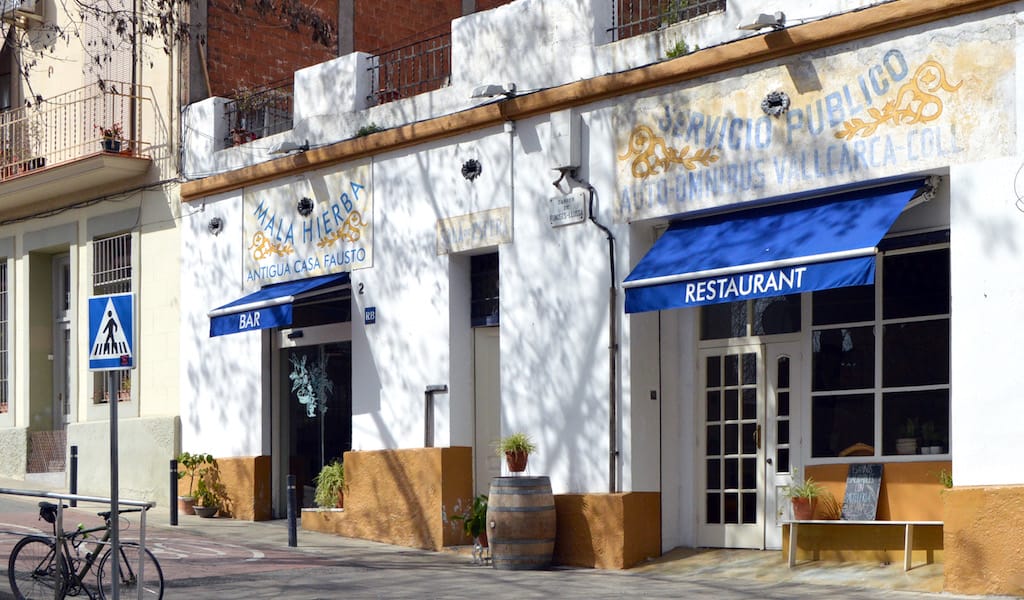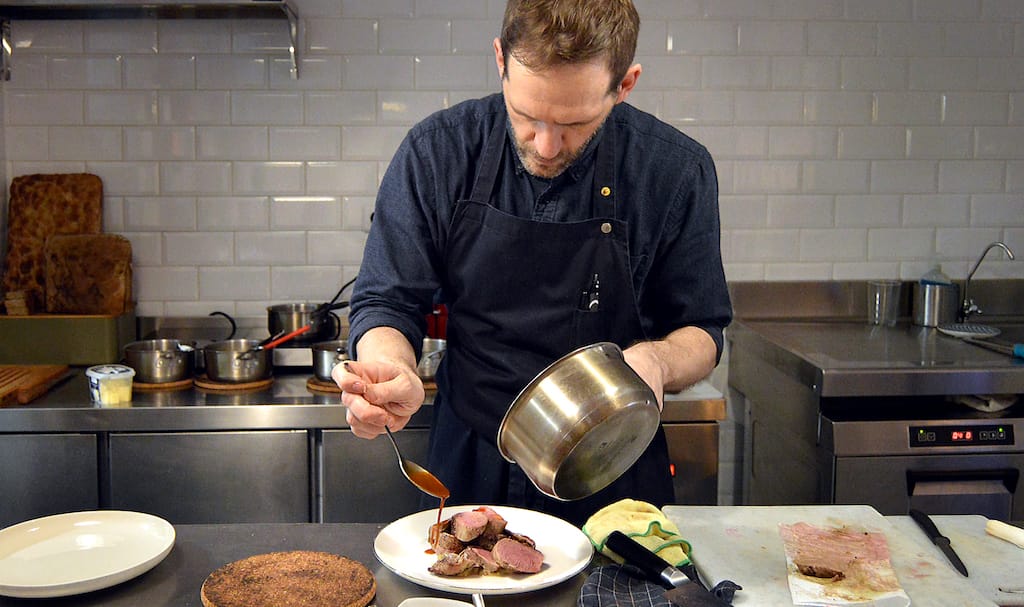Although reputed for its meat, La Femme du Boucher is nothing like your classic steakhouse. Plants dangle from the ceiling and sprout on shelves, making the covered patio feel like an outdoor garden, and a heap of roasted vegetables gets equal footing with our huge hunk of boudin, or blood sausage.
We have chef Laëtitia Visse, the woman behind “The Butcher’s Wife,” to thank for this departure from the clubby, gentleman vibe. The young chef’s first restaurant reflects her simple desire: to serve up great food and good times. The generous plates and convivial space help see to that.
Laëtitia honed her chops at the prestigious École Ferrandi, with stages (apprenticeships) alongside big names like Guy Savoy. “I was taught at school that etoilés [stars] were all that mattered,” she explains. So that’s what she aimed for, enduring 16+ hour days and harassment in some of Paris’ top kitchens.
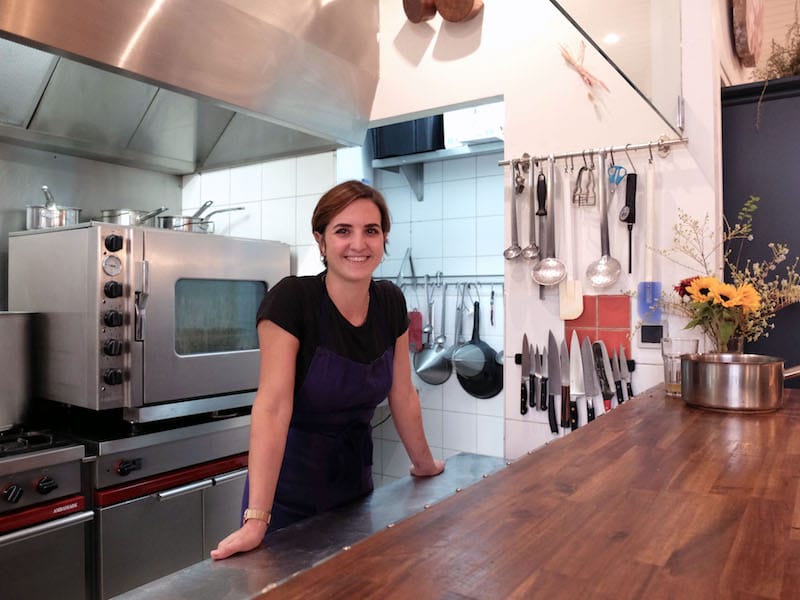
A meal at Beef Club put Laëtitia on a different path. Modeled after an American steakhouse, the cult Parisian restaurant introduced her to roasted marrow bones, aged steaks and the most fantastic caramelized onions. It was an eye-opening experience, since “stagiaires never get to touch expensive meat,” she explains. She got a job working for its chef, Thomas Brachet, at his new place, Les Arlots. There, the maestro of meat taught her to make sausages, pâtés and succulent gravy as well as the marvels of offal. But the most significant lesson was that great cooking doesn’t need to have a star attached.
Another fortuitous encounter led Laëtitia to Marseille. While stewing in Aix-en-Provence post-breakup, she met Marseille-based chef Emmanuel Perrodin. He found her a job in the city, at Bar de la Relève. When the hipster spot was forced to temporarily close, she cooked at Emmanuel’s events and various pop-ups. Her cochonailles (pork-based charcuterie) earned her a following – we’ve been big fans since tasting her caillettes, a porky chard meatball wrapped in caul fat.
It was Emmanuel who proposed that she open a restaurant in a butcher shop – for aesthetic purposes, but also so that later down the line she could sell her terrines, pâtés and sausages at the counter. She found a place in the 6th arrondissement – a butcher in front with a dining area in the back – that happened to be for sale. After just five minutes inside, Laëtitia knew it had to be hers. The location was risky, a no-man’s-land between Cours Lietaud’s scooter shops and Rue de Rome’s cheap boutiques, But its affordability was a plus for a first-time chef – especially one trying to get a loan in the middle of the coronavirus pandemic.
Together with her tattoo artist fiancé, she spruced up the interior with brass light fixtures, wood and marble bistro tables, and plants peppered throughout. Out went the red (“too much like meat”) and in went hunter green paint on the walls. Though bigger than she had wanted, the 55-seat dining area is divided into three cozy settings: a plant-filled terrace, an airy section beneath skylights, and a handful of tables beside the open kitchen.
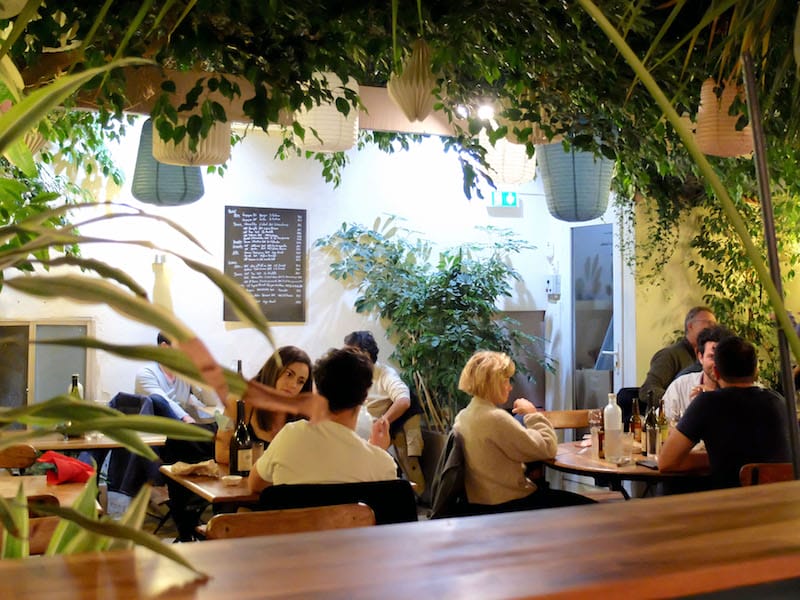
The small menu – two to three choices each for a starter, main and dessert – gives the chef the freedom to switch up plates on a daily basis. Yet even with the limited options we still find it hard to choose between items like seared beef tongue, aged Hereford steaks with double-fried frites, and sausage-stuffed lamb. The pâtés, terrines, and sausages are lovingly made in house, the latter with less salt to amp up the pork flavor – and decrease the thirst that cured meats can elicit. The boudin, one of Marseille’s best, is made with a mess of caramelized leeks and onions, a pig’s head simmered overnight, tongues for extra oomph and, of course, pig’s blood.
“It takes time to prepare plus an effort to source the best ingredients,” Laëtitia shares, but “it’s worth it.” Her great rapport with local Boucherie Moulin ensures high-quality cuts – plus free bones to make her jus de viande (gravy). Though it costs a ton in shipping, she orders aged steaks from Deysens, a butcher near Paris favored by French chefs. This commitment to sourcing is reflected on the plates and with the loyal customers – some of whom have confessed to Laëtitia that they only consume meat at La Femme du Boucher.
The pâtés, terrines, and sausage are lovingly made in house, the latter with less salt to amp up the pork flavor.
They also come for a delicacy that’s becoming rare in France: beef testicles. Laëtitia demystifies the neglected cut by serving delicious preparations, like the pan-fried couilles topped with seared foie gras, á la Rossini, that we devoured. In fact, she even published a couilles cookbook recently, galvanized in part by the sexist comments that she received from certain male chefs (namely that working with testicles would make her seem promiscuous).
Diners at Femme du Boucher “expect only meat,” affirms Laëtitia. But she loads her plates with veggies, in tune with her credo that “cooking is like wine – there must be balance.” This means duck terrine topped with radishes, chives and pickled onions, and a tender paleron du boeuf (beef shoulder) served with squash and melt-in-your mouth leeks. She buys produce mainly from Jamal, the farmer that feeds local chefs, at the nearby Cours Julien farmers’ market.
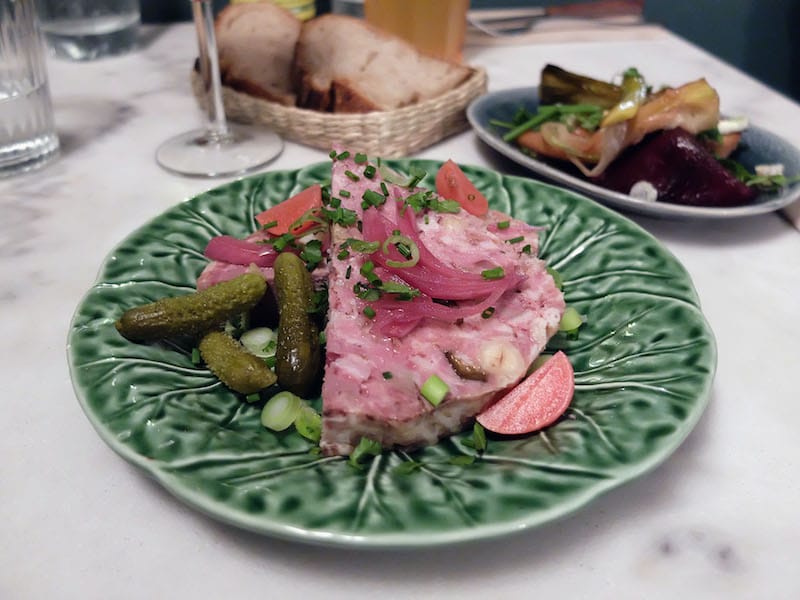
“I can’t order in advance,” admits Laëtitia, who creates recipes based on how ingredients speak to her. Her weekly trips have inspired more fish on the menu, like locally sourced mackerel and squid stuffed with sausage. The market also sells the fantastic orange sorbet that accompanies her decadent chocolate cake.
In spite of her never-ending to-do list, Laëtitia also appreciates the liberty she has as owner. She handpicked her kitchen staff: Margaux, who moved to Marseille for the job, and Loncey, an enthusiastic apprentice. She gets to serve the hearty portions that her former bosses critiqued. And she chose opening hours that suited her: closed on weekends and open Mondays, to be able to dine at the tables of fellow chefs and to welcome them on their night off.
This sociability makes the open kitchen the heart of La Femme du Boucher. From our table nearby, we watch nearly every customer exchange words with the chef, from a hearty merci to more intimate bisous (kisses). They are thankful for a spot that fills the carnivorous void in Marseille’s food scene. That was why Laëtitia opened in her adopted home – just two months in, and La Femme de Boucher fits right into the city. The meaty morsels of French cuisine mixed with the generous spirit of the south.
Published on November 06, 2020
Related stories
March 28, 2018
BarcelonaUp in Barcelona’s hills, in the El Coll neighborhood, where the city ends and the sky is cut by the spiky shapes of the pine trees in Collserola Park, Agreste de Fabio & Roser – formerly known as Mala Hierba, or "bad weed" – is sprouting up. Emphasizing sustainability and healthy eating, the restaurant is…
September 30, 2022
Marseille | By Jenine Abboushi
MarseilleLe République may be one of the most beautiful restaurants in Marseille. A historic space that once housed Café Parisen (from 1905, with its boulodrome for games of pétanque on the lower floor), it has been elegantly renovated and was reopened at the beginning of 2022 as a restaurant gastronomique solidaire—a gourmet “solidarity restaurant” and…
February 14, 2022
BarcelonaOlivos Comida y Vinos is like an independent movie playing at a small cinema on a quiet street in Sants, a neighborhood just outside of Barcelona’s center. It leaves you with the impression of having had an unexpected, intimate connection with something personal and precious. They don’t have customers – they have fans. Decorated with…














































